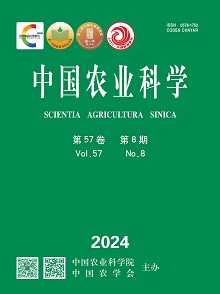【Objective】Cinnamyl alcohol dehydrogenase (CAD) is a key enzyme in lignin synthesis pathway, which plays an important role in enhancing plant mechanical strength and resisting pathogen invasion. The aim of this study is to identify CAD and CAD-Like (CADL) gene family members in Gossypium barbadense and to analyze their expression characteristics and their role in Verticillium wilt resistance, which provides reference for the mechanism elucidation and disease resistance breeding of cotton against Verticillium wilt. 【Method】The CAD and CADL gene family members in G. barbadense genome were identified by bioinformatics method, and their chromosomal location, phylogenetic relationship, gene structure and promoter cis-element prediction were systematically analyzed. The expression characteristics of GbCAD and GbCADL were analyzed by obtaining publicly released transcriptome data and real-time fluorescence quantitative polymerase chain reaction (qRT-PCR). Functional analysis of GbCAD and GbCADL genes was performed by viral-induced gene silencing (VIGS) technique. 【Result】A total of 25 GbCAD and 34 GbCADL genes were identified from G. barbadense and distributed on 10 and 17 different chromosomes, respectively. GbCAD and GbCADL genes are divided into 3 and 4 subgroups, respectively. The genes in the same group contain similar exon-intron structures and conserved domains. GbCAD and GbCADL genes have different transcriptional expression characteristics, and the promoters of GbCAD and GbCADL genes contain various hormone response elements and stress response elements. Transcriptome data and qRT-PCR showed that the expressions of GbCAD10A/D, GbCADL4A/D, GbCADL5A/D, GbCADL6A/D, and GbCADL7A/D were induced by Verticillium dahliae, especially the GbCAD10A/D, GbCADL4A/D, GbCADL6A/D, and GbCADL7A/D indicated significant increased expressions under V. dahliae treatment. The genes of GbCAD10A/D, GbCADL4A/D, GbCADL6A/D, and GbCADL7A/D were respectively silenced in cotton by virus-induced gene silencing (VIGS) technology, to analyze the changes of VIGS plant lines against V. dahliae treatment. The results showed that, compared with the control plants, the VIGS plant lines indicated significant decreased resistance to V. dahliae. The results of diaminobenzidine (DAB) histochemical stain displayed that, both control and VIGS plants showed similar normal phenotype without V. dahliae addition; after 6 h treatment of V. dahliae, the VIGS plant lines silencing GbCAD10A/D, GbCADL4A/D, GbCADL6A/D, GbCADL7A/D expressions demonstrated a deeper brown coloring, indicating a higher reactive oxygen species (ROS) accumulation in the VIGS plant lines. The results of stem sectioning showed that, the stem vascular tissues of VIGS plant lines TRV:GbCAD10A/D, TRV:GbCADL4A/D, TRV:GbCADL6A/D, and TRV:GbCADL7A/D showed obvious dark brown enrichment after V. dahliae treatment, indicating the significant decreased resistance to V. dahliae. 【Conclusion】 Suppressing the expressions of GbCAD10A/D, GbCADL4A/D, GbCADL6A/D, GbCADL7A/D could significantly reduce the cotton resistance to V. dahliae.











